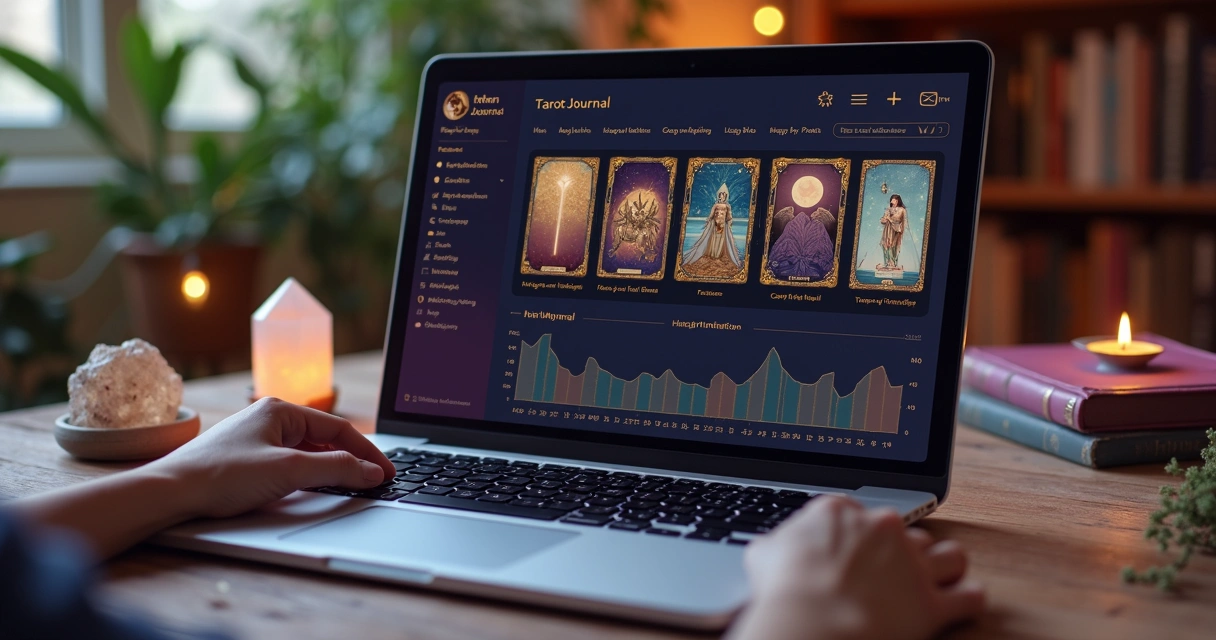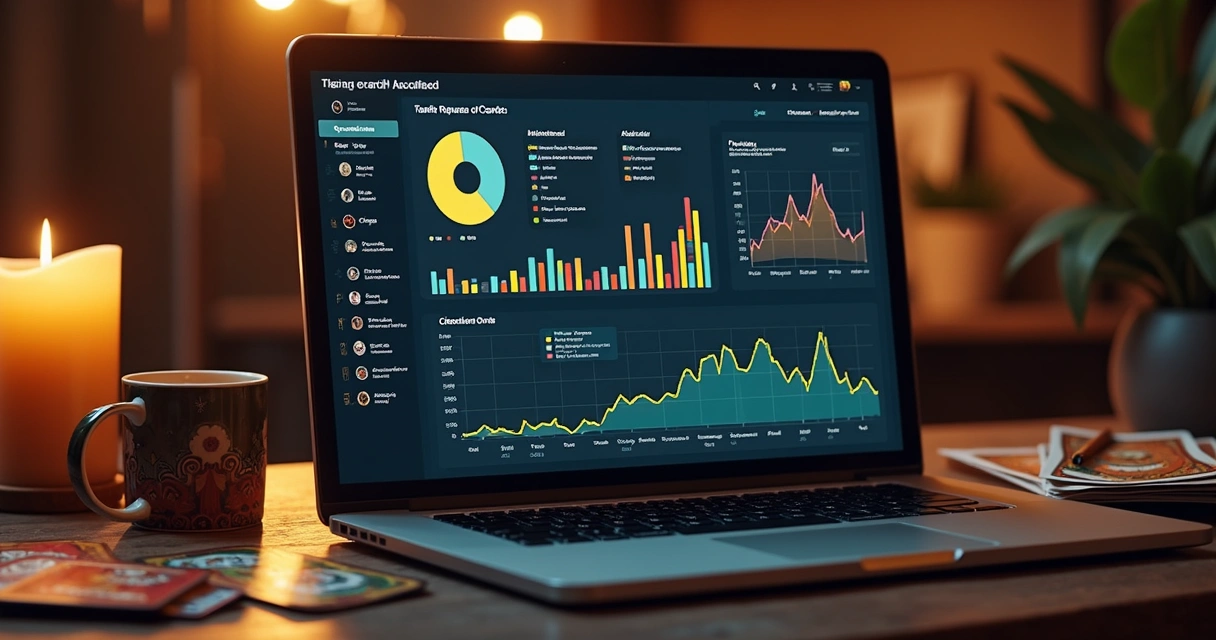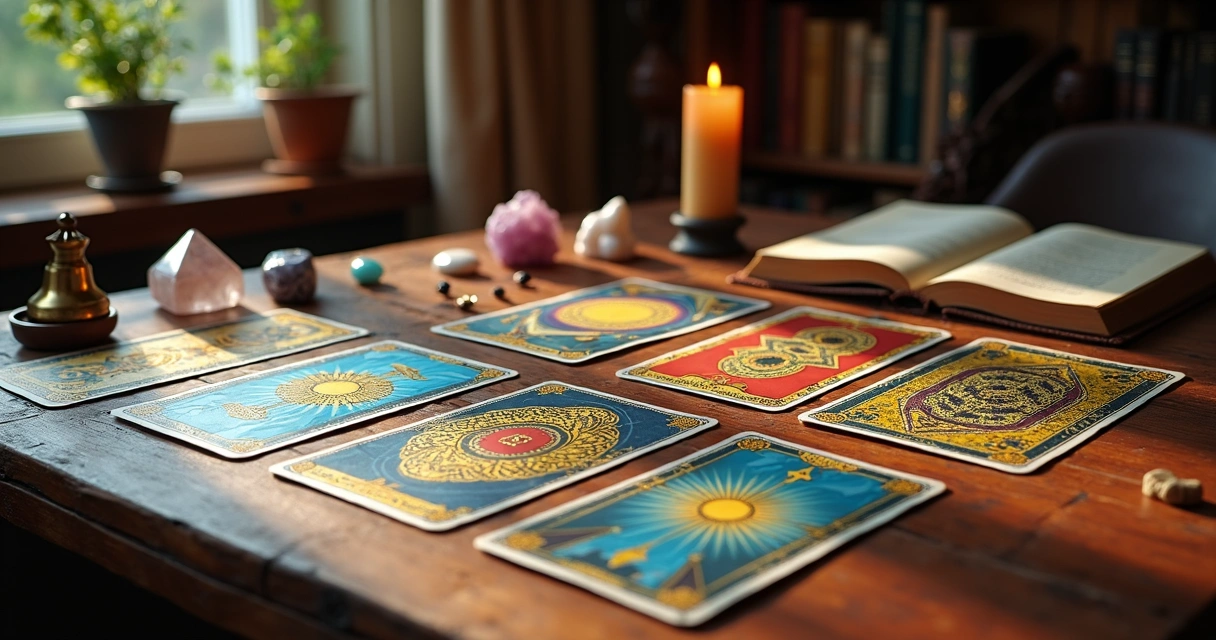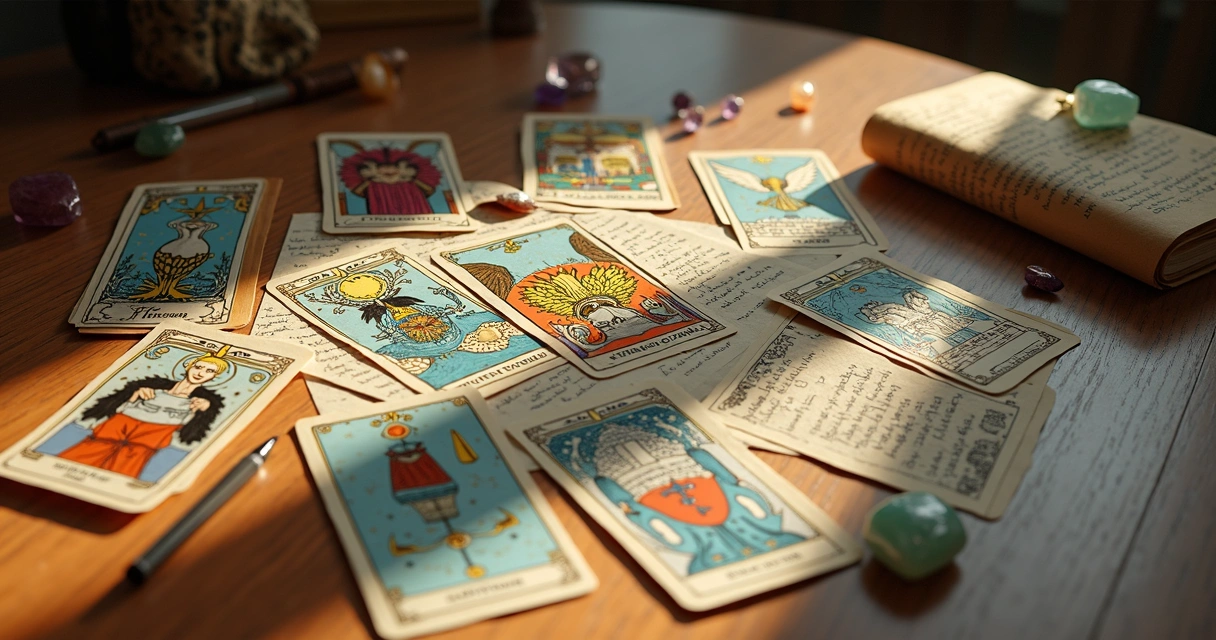Tarot is one of those arts where watching someone grow is as rewarding as reading the cards themselves. As a professional, tracking your querents’ journeys—their shifts, breakthroughs, and changes—can turn fleeting moments into long-term transformation. And honestly? It makes your work so much richer. Yet, taming the chaos of recurring sessions, scattered notes, and fading memories isn’t always simple.
Let’s look at why and how to follow querent evolution with purpose. You’ll find methods for documenting, visualizing, spotting recurring themes, and building a consistent system, including practical steps and digital tools like MysticLog that truly make a difference.
Why paying attention to querent evolution matters
I remember my first returning querent. She asked about her job, month after month. At first, her questions all circled one thing: uncertainty about change. But later, new spreads showed her increasingly focused on action—little by little, she turned anxiety into decision and then into movement. I only saw the full pattern by scrolling through my old notes. Without those, that subtle arc might have slipped by.
A querent’s story is rarely told in a single reading.
That story is found in recurring symbols, repeated questions, shifting energies, and the pace of growth over time. Tracking these patterns is not only helpful for providing more relevant guidance; it’s part of honoring your client’s spiritual process. And it can help you as a reader too, making sessions more insightful, connected, and professional.
Setting up your tracking system
Truly following querent evolution means getting systematic—at least a bit. While there are many analog methods, using a digital companion like MysticLog allows you to store and analyze readings, notes, timelines, and patterns all in one place, boosting both your confidence and your client’s experience. But let’s pause for a second. Systems don’t have to be rigid. You want structure, not stagnation.
What information to capture every time
- Date and session context. This includes the exact date, but also the context―what prompted this session? Did the querent mention a specific event, mood, or milestone?
- Spreads and questions asked. Which spread did you use? What was the wording of their question? (People’s questions evolve just as much as their answers.)
- Cards drawn and immediate impressions. What cards appeared and what stood out to you at that moment? Don’t filter or edit; just jot down what comes up.
- Querent reactions. How did the querent respond? Did their mood shift? Did they focus on a particular detail?
- Personal notes and intuitive flashes. Even small things like “seemed unusually hopeful” or “keeps asking about travel” are gold when piecing together the broader narrative next time.
Various guides highlight the value of regularly recording this information and reviewing it. The benefits stack up over time—the more detailed your entries, the easier it is to notice tiny shifts that might escape your memory.
Digital vs. handwritten journals
No need to choose only one, but digital tools now offer a world of options. You can search, filter, and analyze data instantly, set up automated reminders, and build charts that make trends impossible to miss. MysticLog, for instance, was built to capture precisely these details and then turn them into easy-to-read visuals, timeline charts, and consistent summaries. Still, personal touches matter. Adding little reflections, voice notes, or even importing snapshots of hand-written or hand-drawn spreads keeps things personal in a digital space.
 Turning raw data into meaningful timelines
Turning raw data into meaningful timelines
So you’ve written down every session—now what? The next stage is connecting the dots. A timeline chart helps you visualize not just the readings, but how the querent’s concerns and interpretations change (or don’t) over time. Here’s one way to do it, step by step:
- Put every session on a linear timeline—just list them by date, one after another. If you can, tag each with “main theme” or “focus” (like work, love, healing).
- Add a quick summary next to each. For example, “Afraid of leaving job / 5 of Pentacles,” then, three weeks later, “Sent first resume / Strength.”
- Look for changes in mood, confidence, or question type. Often, you’ll see a slow shift from uncertainty to clarity, or from negative cards to more hopeful ones.
- If using software, generate a visual chart that marks big milestones: breakthroughs, repeated patterns, or changing spread choices.
This visual history is fantastic in client sessions—sometimes showing someone their own progression is a huge motivator. If, for instance, they see that over repeats, the Tower stopped appearing and the Star started instead, their confidence grows naturally.
Growth can be slow, but it leaves tracks if you know where to look.
Examples of timeline indicators
- Frequency of certain cards (is the same major arcana showing up session after session?).
- Shifting focus (do the querent’s questions move from fear to planning? From external to internal?).
- Milestones (has the querent made decisions or taken action that matches the guidance?).
- Recurring symbols or dreams (these can be logged as side notes on the timeline).
- Change in tone or outlook (reading notes show more optimism, acceptance, enthusiasm).
You can learn more about setting up session logs and self-review in articles discussing daily tarot draws and monthly review sessions. Such methods are helpful, not just for personal work, but for tracking professional querent progress as well.
Detecting recurring patterns and breakthroughs
Patterns are the gold in the mine when it comes to client tracking. Some cards, combinations, or themes haunt a querent. Others fade out as blockages clear. How do you catch this? It’s part science, part subtlety.
How to spot recurring patterns
- Tag and color-code entries by theme (love, finances, healing, etc.) in your journal or app. This way, you just search “Justice” or “Work Frustration” and get every instance.
- Highlight the returning cards or spreads. Sticky notes in analog journals work, but digital dashboards can show stats (how often certain cards appear, and in what context).
- Add notes on querent language or attitudes. For example, if a person always says, “I’m stuck,” note that phrasing each time. Watch for its disappearance.
- Mark ‘Ah-ha’ readings clearly. When you notice a breakthrough (the client makes a new realization or decision), flag it with a symbol or keyword so it stands out in your review.
 MysticLog’s mystical AI assistant even suggests possible patterns and interprets shifting energies, making it easier to catch invisible threads. You don’t have to rely just on intuition—clear data makes subtle patterns impossible to overlook.
MysticLog’s mystical AI assistant even suggests possible patterns and interprets shifting energies, making it easier to catch invisible threads. You don’t have to rely just on intuition—clear data makes subtle patterns impossible to overlook.
Defining and measuring querent growth
Tracking is only helpful if you know what signs of “growth” or evolution look like. The process is both obvious and subtle. Big swings matter, but so does quiet acceptance or the change from “Will they come back?” to “What do I truly want?” Here’s what to keep an eye on:
- Progress in decision-making. The querent shifts from indecision and circular questioning to making choices and acting on them.
- Emotional regulation and awareness. Are their reactions to cards or outcomes less volatile? Is there more calm reflection?
- Change in self-perception or language. Phrases move from helplessness to agency (from “I can’t” to “I will try”).
- Repeat card changes. E.g., repeated appearance of the Moon (confusion) drops away, and the Sun (clarity) shows up after key sessions.
- Deeper or more focused questions. Early readings might be, “Why am I anxious?” Progress is, “How do I shape my relationships more intentionally?”
- Reflections on old sessions. The querent offers feedback on previous reads, acknowledging progress themselves.
According to some structured guides on effective tarot journaling, reviewing outcomes and reflections helps clarify lessons learned from each encounter. This loop supports ongoing change.
Personalized notes: the real secret sauce
Every client is different, and their journey deserves personal attention. Sure, tracking spreads and cards matters, but including your unique impressions, intuitive nudges, and their feedback is where magic happens. For example, jotting down that a querent was unusually quiet or suddenly inspired brings warmth to the cold facts.
Personal notes turn data into a story worth remembering.
These also matter in follow-up sessions. Reviewing them just before a reading refreshes your memory and deepens your rapport, helping the querent feel seen and respected.
Be open to imperfection
No system will catch everything. Sometimes, a pattern appears real but fizzles out, or your notes feel inconsistent. Some querents come once a year, others every month. That’s fine. Consistency helps, but it’s never perfect—even the world’s best CRMs can’t predict every human twist. Accept the odd missed detail and focus on the bigger picture.
 Making follow-up routines second nature
Making follow-up routines second nature
To reap the benefits of tracking, you need habits, not just intention. Here’s how to make reviewing progress and setting new goals feel like a regular part of your practice:
- Set aside a fixed time each week or month to review past sessions for each client. If you have lots of querents, rotate through your list to keep it manageable.
- Prepare for each new session by reading your last notes and updating your impressions. This allows for focused guidance and builds continuity.
- Invite querent participation. Encourage them to reflect or journal, too. Ask about what’s changed since the last session, or share a snapshot of their timeline (privacy-respecting, of course).
- Share insights sparingly. Sometimes, showing a querent their progress can be illuminating—even if it’s just, “Hey, remember three months ago when this card kept coming up?”
- Use reminders. Calendar alerts or digital CRM notifications from tools like MysticLog nudge you to check in and update your tracking habit.
Whether you prefer keeping a paper log or embracing digital tools, the trick is simply forming the habit. According to those who practice regular tarot journaling, reflecting frequently deepens personal insights and strengthens professional intuition. Slightly overdoing it, rather than under-doing, often helps more than you’d imagine.
Final thoughts: take querent care to the next level
Following a querent’s progress is simple in theory—write it down, check back later. In practice, the art is in building a rhythm, capturing the small pivots, and reflecting in a way that fits your workflow. MysticLog is built exactly for these realities, offering tools that help you turn every session into a stepping-stone, not a stand-alone event.
Ready to see your clients’ stories stretch out before you—and help them recognize their growth in real time? Make this the year your reading sessions become a legacy, not just a moment. Start documenting, tracking, and reflecting with intention. Try MysticLog or simply review your old notes today. You’ll be amazed at just how much you, and your querents, have already moved forward.
Frequently asked questions
What is querent evolution in tarot readings?
Querent evolution describes the process of growth, change, and self-discovery that a tarot client experiences over multiple sessions. It’s visible in how their questions, reactions, and perspectives shift—sometimes very subtly—across time. Paying attention to these changes helps both the reader and querent appreciate progress that might go unnoticed in single sessions.
How can I track querent progress over time?
The best method is to record every session with detailed notes, including the date, spreads used, questions, cards drawn, your interpretations, and the querent’s responses. Use a system—either a paper journal or a digital tool like MysticLog—to build a timeline and spot repeating themes, key shifts, and milestones. Regularly reviewing past entries helps clarify patterns and inform future readings.
What tools help document querent evolution?
Digital CRMs like MysticLog are designed specifically for mystics, combining session logs, visual timelines, and pattern recognition tools. You can also use structured journals and color-coded notes. The important part is being consistent, capturing both facts and your intuitions, and making the information easy to revisit later. Tools that support tagging, searching, and visualizing trends are very helpful, especially as your practice grows.
Is it worth it to track querent evolution?
Yes, tracking querent progress brings greater meaning and professionalism to your readings. It provides richer insights, strengthens your relationship with clients, and gives you a concrete record of their growth. Multiple studies and guides emphasize that reflecting on past readings can improve your skills and deepen the spiritual journey for everyone involved.
How often should I review querent history?
Aim to review querent history before each new session and periodically—every month or so—for your most regular clients. You don’t need to reread everything each time; focus on highlights, major shifts, and repeated patterns. Monthly reviews are especially useful for noticing longer arcs, preparing for new sessions, and catching subtle changes.



